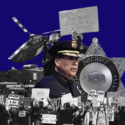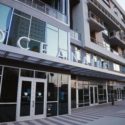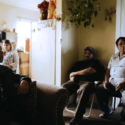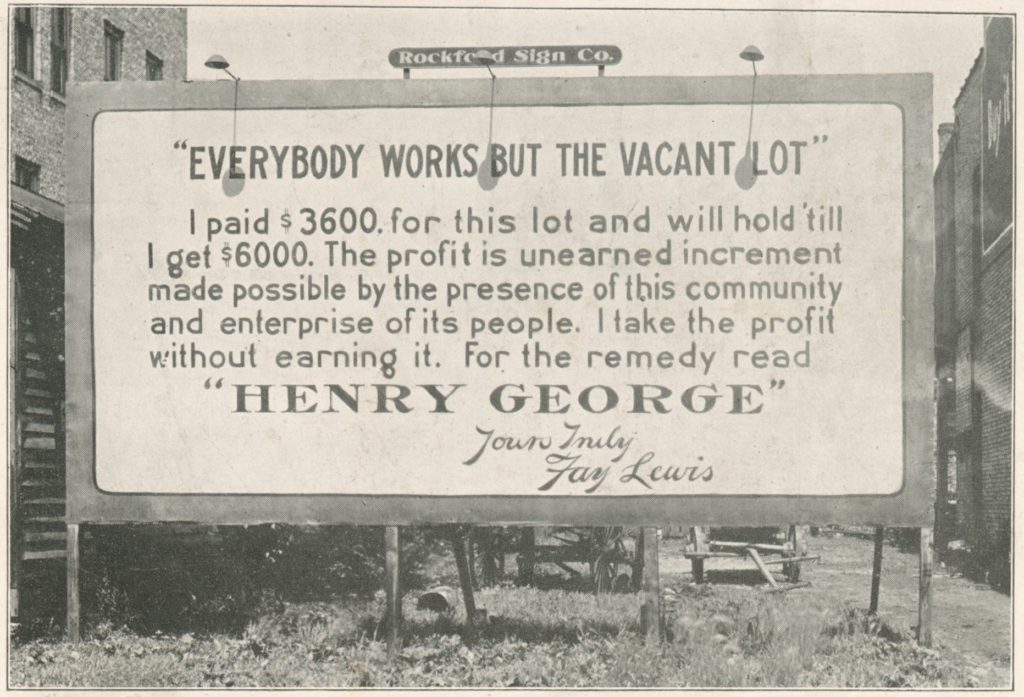LBPD Injured ER Doctor, Teen Author, Others, with ‘Less-than-Lethal’ Rounds During May 31 Protest
17 minute readIf you were injured by police during the May 31 protest in Long Beach, we’d like to hear your story. Email us at editors@forthe.org.
Johnathan Harris remembers being a kid and hearing about Trayvon Martin. He was still in elementary school, but remembers wanting to go to one of the protests sparked by Martin’s killing in 2012.
“That touched me because I knew when I got to that age, that I was going to be going through the same things he went through,” Harris said. “Me and him look alike, supposedly.”
But his parents, concerned for his safety, didn’t let him go because he was too young. When he learned about the police killing of George Floyd, he again felt the urge to protest.
“I’m about to turn 19, I was like, I might as well go out. I really need to go out and really show support because that George Floyd thing could have happened to me,” he said. “I mean, I have earrings. I have facial hair. To people, I’m considered a threat, which is not right.”
Harris recently returned home to Long Beach from college in Texas where he is studying to be a social worker. He and some friends joined the demonstrations that took place on May 31. It was about 6:10 p.m. when he found himself with about 50 other protesters at a police skirmish line near the Forever 21 store at the Pike Outlets.
“So we just decided to ride up and just protest peacefully. No one was throwing stuff, no one was cursing at the police. There was no disrespect,” he said. “There was space between us and the police. It’s not like we were in their face, or anything. It was enough personal space.”
Harris captured the moment on cell phone video, which begins as he’s standing several feet from police beneath the Cinemark movie theater overhang.
“In the video you can hear we’re saying ‘no justice, no peace,’” he said. “And then as soon as we said the last ‘no justice, no peace,’ the officer raised his gun. I made eye contact with him and then I turned around and that’s when I felt the shot.”
Harris’ camera continued rolling as he ran away and you can hear him grimace in pain when he’s hit with the projectile from behind. “Ah fuck, I got shot,” he says in the video.
we were peacefully protesting and they shot at us. pic.twitter.com/Fqz4C5BQWm
— johnathan 🎖 (@johnathann_h) June 1, 2020
“As soon as l lost my adrenaline, I touched my butt and there was a big bump that was like the size of—it was probably bigger than a golf ball,” he said. “As soon as I got home, I checked it and there was dried up blood on my leg and everything. It was bad.”
He says police acted inappropriately and doesn’t believe he deserved to be shot. He points to the disproportionate police responses seen across the region between the anti-lockdown protests last month and the ongoing anti-police brutality protests.
“As soon as a Black man like myself wants to go out and voice his opinion on how police brutality affects us and how my life matters, there’s a big police presence, and I definitely don’t agree with that,” Harris said.
The use of so-called “less-than-lethal” weapons by police for crowd control has come under newfound scrutiny as civil unrest sweeps the nation in response to the killing of Floyd in Minneapolis.
Critics of these weapons have called on police to end their use because of their potential to cause serious injury or even death. Yet numerous Long Beach protesters were shot and injured with these types of projectiles on May 31, as an uprising raged through parts of the city.
Police say the crowd size grew quickly and unexpectedly from an initial estimate of 200 to over 3,000—later revised to over 4,000.
The LBPD said the less-than-lethal rounds were used after some protesters “became violent” and threw bottles, fireworks, and other items at officers and at peaceful protesters.
“Unlawful assembly dispersal orders were given in multiple instances, which required everyone to immediately cease all activity and leave the area. Additionally, in some areas of the City, violent protesters also began breaking into stores and looting,” said LBPD spokesperson Arantxa Chavarria in an email.
State law defines an unlawful assembly as “whenever two or more persons assemble together to do an unlawful act, or do a lawful act in a violent, boisterous, or tumultuous manner.” The courts have interpreted that to mean “assemblies which are violent or which pose a clear and present danger of imminent violence.”
Asked what orders officers had received that day in regard to use-of-force against protesters, Chavarria said, “We do not publicly provide specific details regarding tactical or operational plans.”
Some have observed that law enforcement officers are given wide discretion when deciding what constitutes an unlawful assembly.
In the immediate aftermath and in the days that followed, people who say they were protesting peacefully reported bruises, cuts, and even broken bones on social media as a result of LBPD officers using less-than-lethal rounds against demonstrators.
Chavarria said the police department is in the process of documenting, reviewing, and evaluating all use-of-force incidents related to that day’s civil unrest. She encouraged anyone who was injured by police to contact the LBPD’s Internal Affairs Division at 562-570-7343 or Internal.Affairs@longbeach.gov, or the Citizen Police Complaint Commission at 562-570-6891.
The LBPD wasn’t alone in deploying such tactics against protesters in the wake of Floyd’s death. Not far from here, both Los Angeles police officers and deputies from the Lakewood sheriff’s station reportedly used various types of less-than-lethal projectiles against demonstrators last week.
‘APPALLING’
Although often misidentified as rubber bullets, what officers shot at Long Beach protesters were actually eXact iMpact 40-mm Sponge Rounds, according to Chavarria. These high-speed projectiles have a “plastic body and sponge nose,” according to the manufacturer’s website.
Sponge rounds, despite their Nerf gun-like name, can cause serious damage. They are part of a larger category of munitions known as kinetic impact projectiles (KIPs), which also includes rubber bullets and bean bag rounds.
Public health researchers have said that KIPs should not be used for crowd control because their potential to kill, maim, or blind is too high. A freelance photographer in Minneapolis was blinded in one eye after being shot by police with some kind of less-than-lethal projectile.
A wide-ranging review of injuries and deaths caused by KIPs, published in BMJ Open in 2017, found that 3% of people hit by these types of rounds died of the injury. Additionally, 15% of the 1,984 people researchers studied were permanently injured by the projectiles.
“Given their inherent inaccuracy, potential for misuse and associated health consequences of severe injury, disability and death, kinetic impact projectiles do not appear to be appropriate weapons for use in crowd-control settings,” researchers found.
Physicians for Human Rights, a nonprofit advocacy group based in New York, has called for law enforcement to discontinue the use of KIPs for crowd management because “at close ranges, levels of lethality and patterns of injury of some KIPs become similar to those of live ammunition. At longer ranges, KIPs are inaccurate and indiscriminate.”
Experts say that even though these types of rounds do not always penetrate the skin, the blunt force they inflict can cause a fatal injury to the heart or lungs.
“These might not be lethal unless you’re hit right in the throat or in a very specific spot, but they can certainly cause pretty significant morbidity,” said Dr. Bobby Carey, an emergency medicine resident at Harbor UCLA Medical Center. He says he was shot in the forearm with a KIP by Long Beach police at about 7 p.m. at the intersection of Broadway and Pine Avenue.
“We were there initially to provide any medical care,” he said. “I was wearing my white coat and figured someone who’s obviously a doctor or there to provide medical care, (the police) would not shoot us. Obviously, that’s not what happened.”
Carey, a Long Beach resident, said things were peaceful until protesters and police exchanged projectiles—protesters flinging bottles and police launching less-than-lethal rounds. He says he doesn’t remember hearing an order to disperse from police.
“At one point a large group of people sort of hit the deck, they were either kneeling or lying on the ground to avoid getting hit. Some of the other people, myself included, were standing up with both hands in the air. ‘Hands up, don’t shoot,’ we were chanting. I think it was right around that time I saw one of the police officers aiming right at me. I tried to move one way, and he sort of stuck with me.”
Then the officer shot him. He felt several of his fingers go numb and began bleeding from a quarter-sized area on his arm.
“In that moment, you sort of panic a little bit. You know it’s not a real gun, it’s a rubber bullet gun. Your adrenaline sort of takes over. So I remember just being freaked out,” he said. “I’ve been hit with a paintball gun a number of times and I was pretty surprised how much of a punch this packed. My first thought was that I broke my ulna, one of the two bones in my forearm.”
Editors’ Note: One of our editors, Madison D’Ornellas, who was nearby when this occurred, saw Carey was injured and helped him stop the bleeding with gauze she had on her.
Thug police shot me with a rubber bullet during the peaceful protest in LB. I was standing with my arms up and saw one stormtrooper aiming right for me. If they’re lighting up doctors in white coats in broad daylight, imagine what they get away with when the world isn’t watching pic.twitter.com/FSuc4dy34z
— Bobby Carey MD (@bobbycarey) June 1, 2020
“This was about a week ago and even today I have bruising from the palm of my hand all the way up just below my elbow,” Carey said in an interview Sunday.
He called the department’s response to the protest “appalling.”
“I think the events of the last couple weeks have demonstrated that police may not actually be making us safer and might actually be contributing to the problem,” he said.
‘TOTALLY UNCALLED FOR’
About an hour after Carey was shot, Miguel Rodriguez, 25, a sales representative and lifelong Long Beach resident, says he was struck four times by KIPs discharged by LBPD officers.
He was left with bloody welts all over his body that hurt so bad he was forced to call off work the next day.
On May 31, Rodriguez says he was in a crowd of about 50 people who were protesting downtown at about 8:10 p.m. on Ocean Boulevard just east of Pine Avenue—10 minutes past the curfew the city had imposed earlier in the day.
The group was completely peaceful at the time, he says, with the most tense moments coming when protesters yelled at police.
“We were kneeling at first. But when we stood up with our hands up—some people had posters, some people had pictures, there was some guy yelling ‘This is justice for George Floyd, Eric Garner’—that’s when they just started shooting,” he said.
Rodriguez said at first he was shot in the stomach and fell forward.
“It’s a pain that you can’t do anything about and it stings,” he said.
He says he was on the ground for about a minute before getting up, which is when he started recording with his camera phone.
“After that the officer called the sergeant and then he came forward. And all I did was ask him for the officer’s badge number. I said give me your badge number. I need to report this,” he said.
Tomisin Oluwole
Fragmented Reflection I, 2021
Acrylic on canvas panel
24 x 30 inches
Click here to check out our interview with Tomisin Oluwole, a literary and visual artist based in Long Beach.

Instead of gunking up our site with ads, we use this space to display and promote the work of local artists.
In the video, he lifts his shirt up to reveal a bloody red mark on his stomach left by the first projectile that hit him. He then says to a nearby officer, “I didn’t do anything bro, why’d you shoot me for?”
An officer responds, “It’s time to go.”
Rodriguez asks officers multiple times for the badge number of the officer who shot him without success before the video ends.
Rodriguez said police then moved closer with their KIP launchers pointed at him as he held his hands up.
“I didn’t do anything. And then a lady cop right next to (one of the officers) shot me again, from point-blank. That one, that’s the one on the left towards my rib. That one hurt a lot man,” he said. “And then I dropped my phone and I kind of yelled.”
According to Rodriguez, police would not let him pick his phone up and instead they kicked it towards him. By then he was so outraged that he spat in the direction of the police but said “it didn’t even get close to landing on them.” As he limped away, he said he was pelted twice from behind.
“(The police) started to shoot everyone and they shot me again in the back, the lower back and another one on my left arm by the tricep. So four total,” he said.
He woke up the next day in so much pain that he couldn’t get out of bed and had to miss work.
“I couldn’t sleep. I had to sleep face up. The wounds are healing but they’re crusty, you know, the skin is really scabby,” he said. “I haven’t gone to the hospital to be honest. But I’m gonna go tonight.”

Photos courtesy of Miguel Rodriguez.
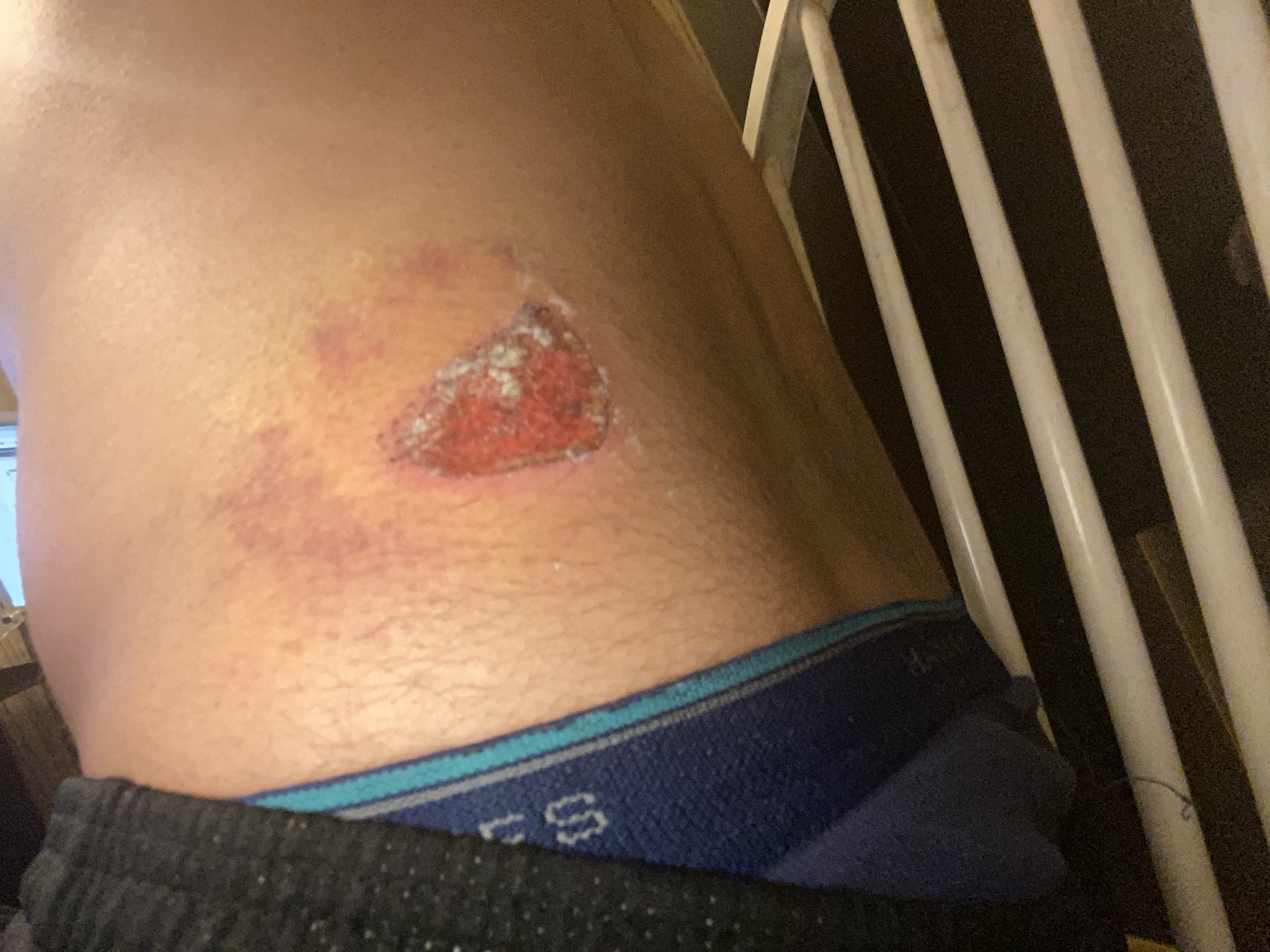
He says he’s worried the rubber rounds caused internal damage because it’s painful when he coughs.
“I think there should be other ways to handle those kinds of situations, especially the peaceful protests because I was also there when people were looting. And (the police) weren’t shooting at them or anything,” Rodriguez said. “And for them to shoot us, the ones that were not doing anything was just totally uncalled for.”
OTHERS HIT
Videographer Scott Barker captured perhaps one of the more gruesome injuries that resulted from police shooting KIPs at protesters. He was shooting footage near a police skirmish line just after 6 p.m. in the intersection of Broadway and Pine Avenue. About 100 feet behind the protesters a few people began looting and throwing objects at police.
He says police would intermittently fire KIPs in an attempt to hit those in the back who were being unruly.
It was during one of those volleys that a woman was shot in the hand.
“When I turned around I saw her hunched over holding her hand,” he said. “When I got to her she was holding her wrist and her two middle fingers seemed to be twisted and bloody. From the way they looked I would have guessed that they were broken, but the fact that there was so much blood made it seem like more damage than that had been done, but I can’t say for sure.”
Warning : The video linked below contains graphic images.
He said he saw the woman’s phone on the floor with a major impact point in the middle of it.
“A medic did eventually get to her and under a hail of more bullets being fired, and some individuals using their bodies to protect her, she was escorted away. I asked someone else who was nearby what they saw, They said it looked like her fingers had been ripped from her hand and were dangling,” said Barker.
KPCC reporter Adolfo Guzman-Lopez was also shot in the throat with a rubber bullet at about 6:30 p.m. in the same intersection, where he had just finished interviewing a protester.
He tweeted about 10 minutes later with a picture showing the wound left by the KIP.
I just got hit by a rubber bullet near the bottom of my throat. I had just interviewed a man with my phone at 3rd and Pine and a police officer aimed and shot me in the throat, I saw the bullet bounce onto the street @LAist @kpcc OK, that’s one way to stop me, for a while pic.twitter.com/9C2u5KmscG
— Adolfo Guzman-Lopez (@AGuzmanLopez) June 1, 2020
In a follow-up tweet he wrote: “The rubber bullet hit stings like a mf, and is starting to hurt, talked to doctor friends, said if not having trouble breathing then ok. Going home.”
In an interview afterwards, he said the officer who shot him had been aiming at him.
The 2012 guidelines on crowd control by the California Commission on Peace Officer Standards and Training say that police should “move media to protected area” before using force to disperse unlawful crowds.
Mayor Robert Garcia later apologized and LBPD Police Chief Robert Luna said that a probe into the incident will be launched.
“Yes we have a version of what happened, but being in this business for 34 years, there’s always two sides to every story,” Luna said.
The day after the protest, a person tweeted that their sister’s arm had been broken by projectiles fired by LBPD officers the day of the protest. We reached out to them to learn more about the injury but have not yet heard back.
Police in Long Beach yesterday shot at peaceful protestors. Y’all shot at my sister & broke her fkn arm.
— Papí (DANI)🤠 (@daniellemdallas) June 1, 2020
Another person described seeing a protester being hit in the eye with a KIP, but we have not yet confirmed the account.
At the Long Beach protest, cops began to fire & a rubber bullet hit a protestor in the eye. IF ANYONE KNOWS HIM OR HAS A PICTURE TO BETTER IDENTIFY HIM, LET ME KNOW! I I WANT TO MAKE SURE HES OKAY. Please rt until we find him.
— ry (@ry_husain) June 1, 2020
A STORY OF RACISM
For Harris this wasn’t his first negative experience with law enforcement.
In 2009, LA County sheriff’s deputies raided his family’s home with guns drawn, but without a proper search warrant. Deputies were looking for his uncle, who was in prison at the time, according to a Long Beach Press-Telegram article.
Harris was 7 years old and says he remembers being handcuffed, along with his three older brothers and his father, an LA County probation officer. Deputies also threatened to tase one of his brothers while he was in the shower, he said.
His mother told the Press-Telegram that the event had traumatized the young Harris, who had afterwards shown “some anxiety, urging his mom and dad not to complain because ‘maybe they’ll come back.’”
His family sued the county and were later awarded a settlement.
“We were some young kids,” he said. “My parents had to sit me down and say ‘Listen, in the future, you’re going to have to go through these types of things. As you get older, they’re only going to get worse.’”
Harris went on to author a graphic novel titled Colorblind: A Story of Racism inspired by the experience.
“I plan to have kids in the future, and I already know my kids are gonna look like me,” he said. “I want a better life for my future kids so they don’t have to go through what I’ve gone through.”
Additional reporting by Madison D’Ornellas.


 kevin@forthe.org
kevin@forthe.org @reporterkflores
@reporterkflores